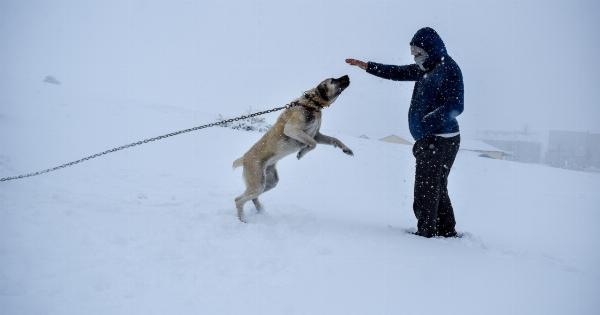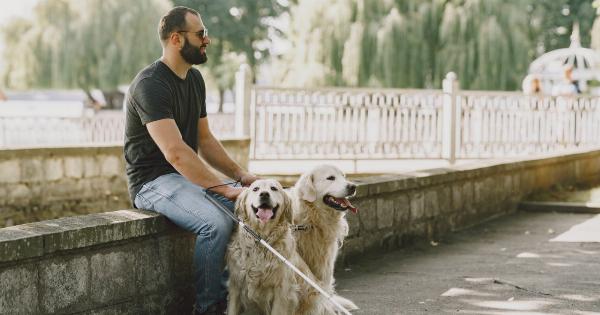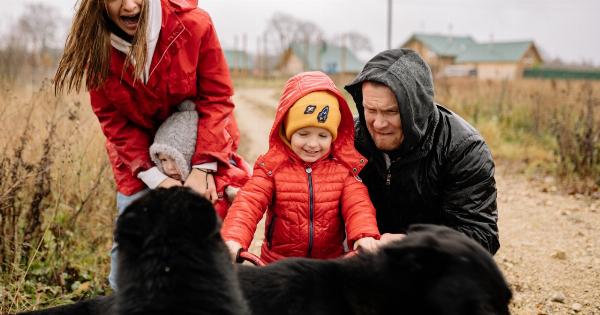Service dogs play an integral role in the lives of many individuals, providing not only companionship but also invaluable assistance and support.
Trained to meet specific needs, these remarkable animals offer a wide range of services, from aiding individuals with physical disabilities to assisting those with emotional or psychological challenges. In this article, we will explore the incredible abilities of service dogs, their extensive training processes, and the profound impact they have on their handlers’ lives.
What are Service Dogs?
Service dogs are highly trained canine companions that assist people with disabilities in performing daily tasks and overcoming challenges.
Unlike pets, which primarily provide emotional support and companionship, service dogs are specifically trained to perform tasks that mitigate the effects of an individual’s disability.
There are various types of service dogs, each trained to meet specific needs. Some examples include:.
1. Guide Dogs for the Blind
Guide dogs, also known as seeing-eye dogs, assist individuals who are blind or visually impaired. They help their handlers navigate obstacles, cross roads safely, and improve their overall mobility and independence.
2. Hearing Dogs
Hearing dogs are trained to assist individuals who are deaf or hard of hearing. They alert their handlers to important sounds, such as doorbells, phone calls, or alarms, allowing them to remain aware of their surroundings.
3. Mobility Assistance Dogs
Mobility assistance dogs provide support to individuals with physical disabilities, including those who use wheelchairs or require assistance with balance and stability.
These dogs are trained to retrieve items, open doors, or even pull wheelchairs as needed.
4. Medical Alert Dogs
Medical alert dogs are trained to recognize specific medical conditions or emergencies, such as seizures, low blood sugar levels (hypoglycemia), or impending panic attacks. They can alert their handlers or seek help when necessary.
5. Psychiatric Service Dogs
Psychiatric service dogs offer support to individuals with mental health conditions such as post-traumatic stress disorder (PTSD), anxiety disorders, or depression.
They are trained to provide comfort, interrupt harmful behaviors, and create a calming presence for their handlers.
These are just a few examples of the many types of service dogs available, each specializing in a particular area to meet the diverse needs of their handlers.
The Training Process
Becoming a service dog is no easy task. It requires dedication, extensive training, and careful selection of suitable candidates.
The training process typically begins in puppyhood, where potential service dogs are identified based on their temperament, health, and physical abilities.
During puppyhood, the dogs undergo socialization and basic obedience training. This forms the foundation for their future training as service dogs.
They learn to follow commands, navigate various environments, and engage with different people and situations. After this initial training, prospective service dogs receive more advanced and specialized instruction.
Professional trainers use positive reinforcement techniques to teach the dogs specific tasks based on the intended service area. For example, guide dogs are trained to stop at curbs, navigate obstacles, and follow directional commands.
Medical alert dogs are trained to recognize scent cues and respond accordingly. Each task is practiced repeatedly until the dogs achieve consistent and reliable performance.
In addition to their service-specific tasks, service dogs also undergo extensive public access training. This training ensures that they are well-behaved and non-disruptive in public places, including restaurants, stores, and transportation settings.
They learn to stay focused on their handler and remain calm in various situations, ignoring distractions like loud noises or enticing smells.
Once the dogs complete their training, they are matched with their future handlers. This process involves considering the specific needs, personalities, and lifestyle of both the handler and the dog.
Compatibility and strong bond potential are crucial factors in a successful partnership.
The Benefits of Service Dogs
Service dogs have a profound impact on the lives of their handlers, providing numerous benefits on physical, emotional, and social levels. Some key benefits include:.
1. Increased Independence
Service dogs enhance the independence of their handlers by performing tasks that would otherwise be challenging or impossible. These tasks can include opening doors, picking up dropped objects, or even dialing emergency numbers.
2. Improved Quality of Life
By assisting with daily tasks, service dogs improve the overall quality of life for their handlers. They provide a sense of autonomy, reduce dependence on others, and increase confidence and self-esteem.
3. Emotional Support
Service dogs offer unwavering emotional support to their handlers. They provide companionship, comfort during distressing situations, and a non-judgmental presence that can help alleviate feelings of anxiety, loneliness, or depression.
4. Increased Safety and Security
Service dogs act as reliable protectors for their handlers. They can detect and alert them to potential dangers, such as an approaching seizure or a hazardous situation.
This heightened sense of security allows their handlers to navigate the world with greater peace of mind.
5. Facilitated Social Interactions
Service dogs serve as social catalysts, often sparking conversations and interactions between their handlers and others. They break down barriers and stigmas associated with disabilities, fostering inclusivity and understanding.
Overall, the benefits of service dogs extend far beyond their practical assistance, providing immeasurable emotional support and transforming the lives of their handlers in profound ways.
The Legal Rights of Service Dogs
Recognizing the invaluable role played by service dogs, various laws and regulations protect the rights of service dog handlers.
In many countries, including the United States, Canada, and the United Kingdom, service dogs and their handlers are granted certain legal protections.
These protections typically include:.
1. Access to Public Places
Service dogs and their handlers are allowed access to most public places, including restaurants, stores, hotels, and transportation, regardless of any “no pets” policies.
This ensures that individuals with disabilities can participate fully in society without unnecessary hindrances.
2. Employment Accommodations
Employers are required to make reasonable accommodations to allow service dogs in the workplace. This may involve modifying policies related to pets or allowing the dog to accompany the handler during working hours.
3. Housing Accommodations
Service dogs and their handlers are typically protected under housing laws, allowing them to live in accommodation that would otherwise have pet-related restrictions. This applies to both rented properties and condominiums.
It is essential for service dog handlers to familiarize themselves with the specific laws and regulations governing service dog access and rights in their respective countries or regions.
The Importance of Responsible Ownership
Service dogs are not only amazing working animals but also beloved companions. It is crucial for service dog handlers to be responsible owners and caretakers, ensuring the well-being and happiness of their dedicated partners.
Responsible ownership of a service dog includes:.
1. Regular Veterinary Care
Service dogs require routine veterinary care, including vaccinations, check-ups, and preventive treatments. Regular veterinary visits help maintain their overall health and well-being.
2. Appropriate Exercise and Mental Stimulation
Like any dog, service dogs require regular exercise and mental stimulation to stay healthy and engaged. Handlers should provide opportunities for physical activities and mental challenges to ensure the dog’s overall well-being.
3. Proper Nutrition
A well-balanced diet is essential for the health and longevity of service dogs. Their dietary needs should be met, and any specific requirements or restrictions should be taken into consideration when selecting their food.
4. Ongoing Training and Socialization
Service dogs benefit from ongoing training and regular socialization to maintain their skills and behavior. This helps ensure that they remain well-behaved, focused, and adaptable in various environments.
5. Mental and Emotional Support
Service dogs provide dedicated support to their handlers, but it is equally important for handlers to prioritize the mental and emotional well-being of their dogs.
Ensuring a loving and nurturing environment, providing adequate rest, and recognizing any signs of stress or discomfort are crucial aspects of responsible ownership.
Conclusion
Service dogs are extraordinary companions, providing unwavering support, unconditional love, and valuable assistance to individuals with disabilities.
Through their intensive training and unwavering loyalty, these remarkable animals become not only trustworthy working partners, but also cherished members of their handlers’ families. Their ability to enhance independence, safety, and emotional well-being make them true heroes in the lives of those they serve.






























